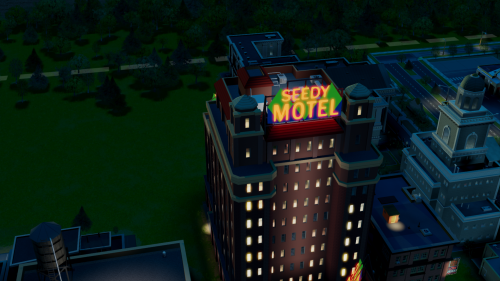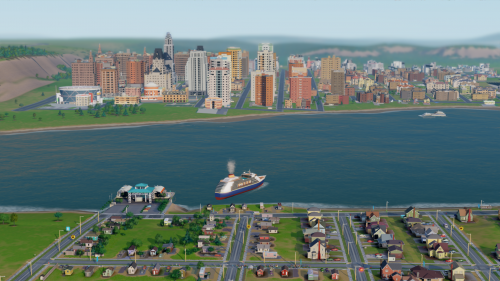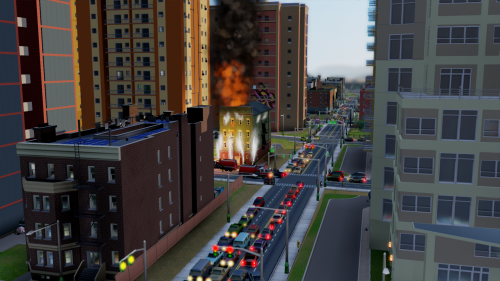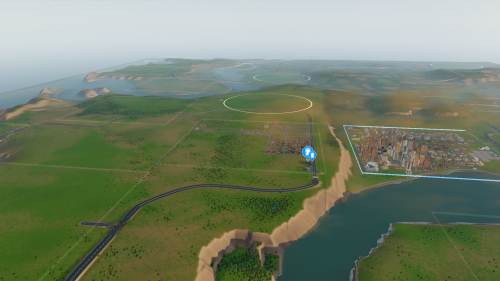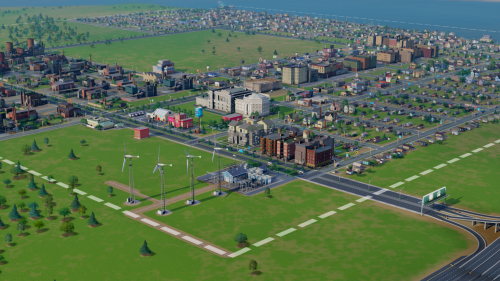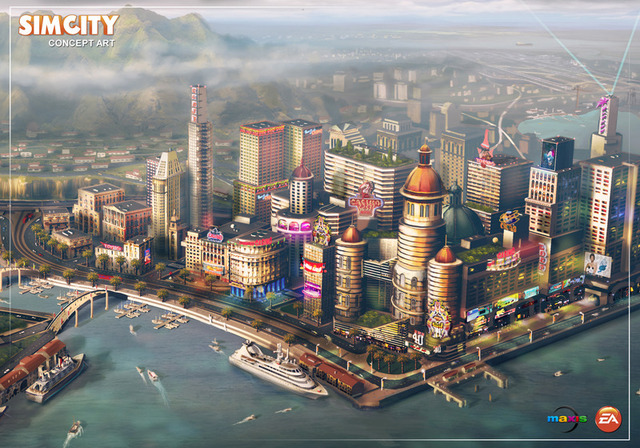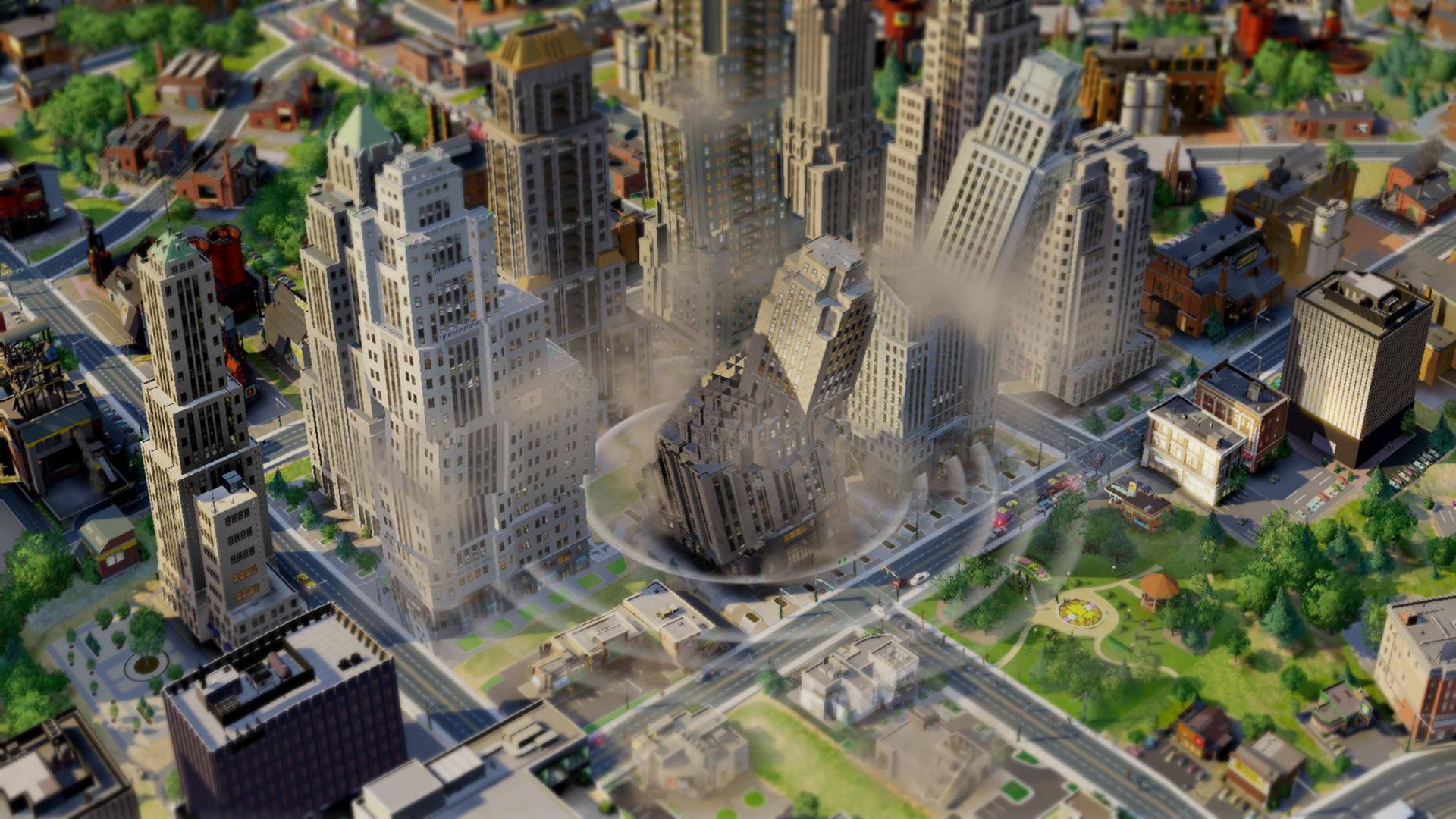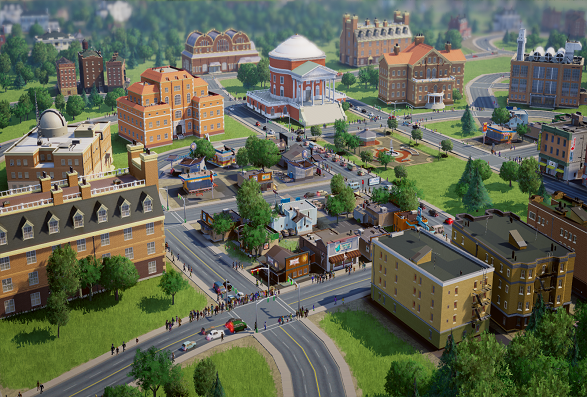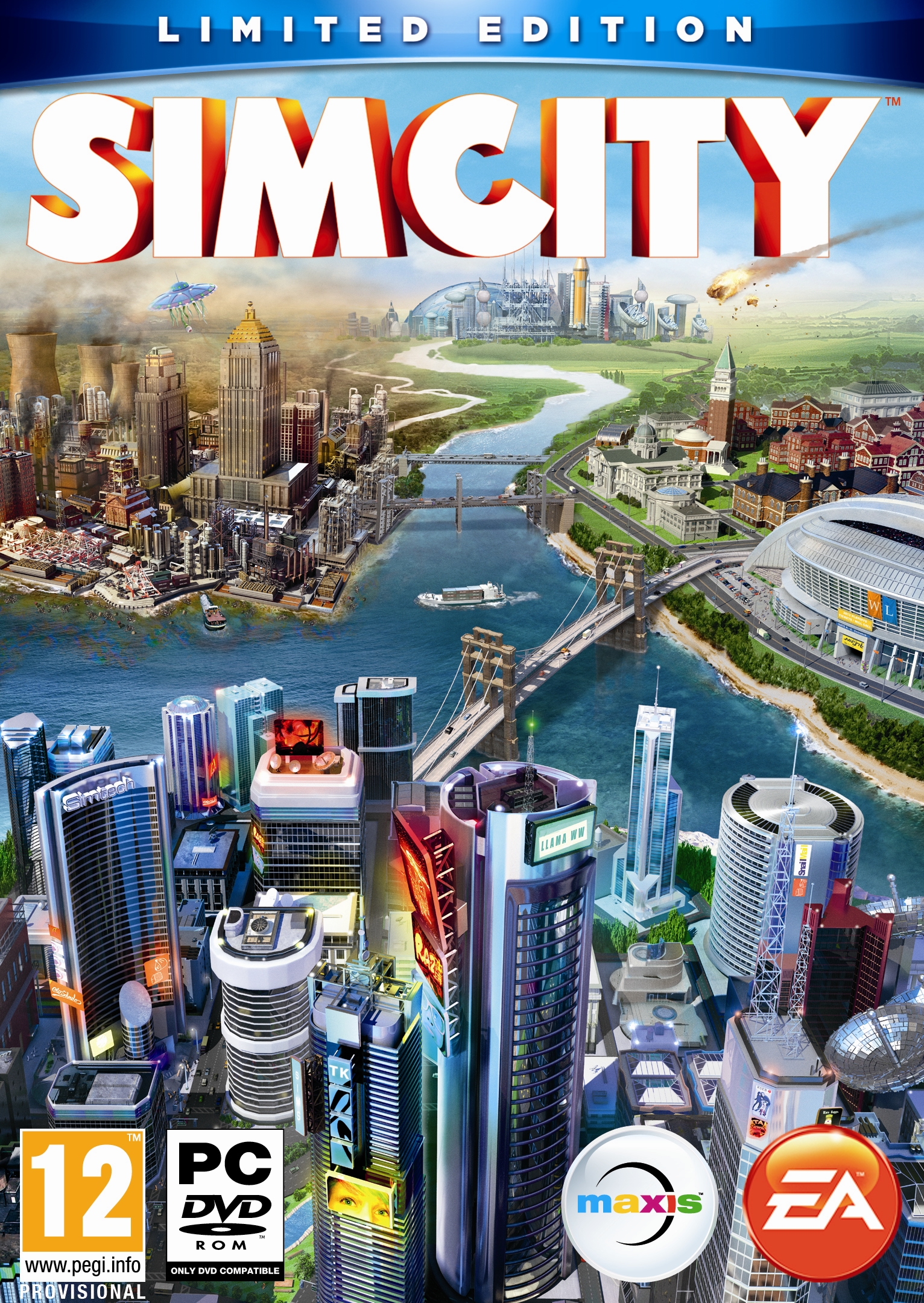
There is a special place in my heart for the SimCity series. The original game was a great way to kill time during rainy lunchtimes at high school on our computer room’s Mac Plusses. When I bought a secondhand Mac Centris off my friend, I spent as much time playing SimCity 2000 on it as I did doing homework. I was there day one for SimCity 4, but had to wait for a patch to come out for the game to even work on my computer at the time.
As much as I love the series, I’ve always wanted it to be more than it is. The restrictions of the grid-based placement system, for example, always bugged me. While it was definitely a technical necessity in SimCity 2000, it felt dated and old by SimCity 4. There was also the lack of free camera, even in SC4. I’ve always wanted better planning controls, like the ability to lay out estates and suburbs in advance and then have them built in stages as money comes in, maybe even do stuff like freeway reserves and “proper” urban planning features.
While planning controls are still at least a version away, the rest of these features are here in the latest iteration of the SimCity series, which is just called SimCity for some reason. Unfortunately, what it gives with one hand, it places severe limitations on with the other.
If you’ve paid attention to the internet since it launched, you’ll know that the game has become infamous for the issues surrounding its always-online requirement, and accessing the servers that support this. I’m happy to report that I never had a problem connecting or playing the game. In fact, the game hasn’t even crashed on me, which is unusual for a newly-released PC game on my system. I’ve had a pretty smooth play experience overall, and, if it weren’t for the fact that it’s now been revealed that the online mode can be easily disabled, I’d probably not even care that it was there.
The problems I have with SimCity have nothing to do with the online requirement. EA have clearly made their choice there, and as much as many people are going to hate it, I have far, far bigger problems with the game.
First, the good stuff. The grid is gone and the game has a free camera. Most importantly, it looks fantastic. Getting a city full of hi-rise buildings and flying through it with the camera is extraordinarily satisfying. Maxis have applied a tilt-shift effect that really helps bring across the feeling of a model city running inside a simulation. There’s also a bunch of camera filters if you’re the kind of person who enjoys ruining your photos with Instagram.
The sound design deserves a special mention. . Zooming right in to almost-street-level gives you the real sounds of a city, with traffic, talking, and even the occasionally homeless guy playing harmonica in a park. Put a rock concert on in the expo centre and you get to hear an entire song sung in Simlish. It’s a great touch that helps your cities feel like living, breathing cities full of real people living real lives. If nothing else, Maxis nailed this aspect of the game.
Sadly, all these atmospheric touches and visual presentation amount to nothing because of some of the strangest design decisions ever taken in a SimCity game. For a start, cities are ridiculously small, so much so that the online community has taken to calling the game SimVillage. It’s not far from the truth, either. If you’re planning to make the kind of sprawling metropolis that was possible in SimCity 4, then you’ll only find disappointment here. It doesn’t take long at all to use most of the available space in a city zone, and, unless you planned well ahead, you’ll find yourself struggling to provide support and services to your rapidly growing population.
What Maxis want you to do is to use an entire region (or, more specifically, play multiplayer in a region, with other players taking care of their own cities), managing multiple cities, and allowing them to share resources, goods and people. While this is similar to SimCity 4, you could at least get away with using only the one city location in a region in that game and letting everything else sit empty. You had a choice there.
Maxis have stated that they may increase the size of the cities in the future, and I hope they do. I’d ultimately like to see regions divided up as they were in SimCity 4, where the boundaries between cities were direct, and you had control over how cities linked together. This allows for more organic growth in a region, and much more creativity on the part of the player. It also stops the bizarre scenario I encountered in one city where, despite being in the same region as three other cities, I couldn’t trade with them because Maxis had decided not to link this city space into the rest of the region’s highway system.
There are big changes in how zones within a city are set up. Traditionally, you laid out zones by drawing them, and then either running roads through them or having the game do this for you. Now, zoning is set up along the side of a road, allowing it to follow the path of the road. More importantly, density is tied to the road rather than the zone. Upgrading densities involves upgrading the road, which can be done in-place. This opens up a lot of control as to how and when you go from one density to the next.
The game also adds a whole new set of “ploppable” items alongside the standard police/fire/school/hospital set. One big change is how the coverage areas for these services work. It’s now possible (likely due to the size limits) for a single police or fire station to cover an entire city. The big feature of ploppables (which is what Maxis refers to them as) is that they can be upgraded. Double-clicking on a fire station allows you to add more garages for fire trucks, as well as a bell that increases response times. You can add more police cars to the police station, and for things like the water pump or power plants, you can add extra pumps or generators. This upgradable system adds a new layer of flexibility, and solves the old problem of needing to place several copies of the same item as the city grows.
The system would work well if it weren’t for bugs in the game’s agent-based simulation. The most obvious one occurs with fire trucks, where, regardless of how many fires you have in your city, you’ll often end up with every available fire truck attending one fire rather than spreading out. Traffic always tends to take the shortest, rather than the quickest, path to a destination, which can lead to the bizarre scenario of a narrow street being filled with cars while a wide avenue is nearly empty.
Another bug currently in the game involves the recycling centre ploppable not working correctly, which can have a severe impact on your economy depending on how you’ve set your city up. I wouldn’t make a big deal of this, except it led me to find what is the game’s second-most frustrating feature after the city size limits. When your city hits zero money, the game pauses and won’t continue until you take some money-generating actions. This is massively frustrating due to the fact that not only can you no longer overdraw your budget, but you are required to take action immediately. The game doesn’t even take into account the fact that you may have income on the way from freight/resource/processor sales. Resolve the problem immediately or your city remains frozen in time forever.
I’d like to hope that this gets fixed in a future update to the game. While I’ve never expected an economics lesson from the SimCity series, I do expect it to provide at least a believable budget management simulation, and that doesn’t happen here. In real life, cities, states and even entire nations can run over budget all the time, and allowances can be made to allow them to get back into the black.
One way to resolve a city’s financial problems is to transfer money from another city in the region. This is a pretty useful new feature that resolves one of the problems regions in SimCity 4 had. You can better create cash-cow cities that earn money that can be supplied to the rest of the region. It would be nice if all cities in a region had access to a shared money pool to make the transfers easier. As it stands, the only shared money in a region is the region budget that’s used to build great works, a set of large regional projects that benefit an entire city. SimCity 2000 fans will be pleased to note that one of these is the return of the arcology.
Despite all that’s wrong with this game, It’s still managed to suck away a ridiculous amount of my time. That feeling of planning a city and then watching it grow from dumpy little houses and shops and grimy factories, to hi-rise buildings and modern industrial facilities is still there. It’s let down only by the utterly ridiculous city size limits. I can’t stress enough how restrictive this is: it doesn’t take long before you’ll be running up against the edges of the area, and from there it’s just a matter of time before you have to start figuring out ways to fit in the extra services a growing city needs.
If Maxis commit to updating and improving the game, what you play in a few months may be vastly different to what I played for this review. On the other hand, I can only review the game I have in front of me, and that game is, at best, a broken mess of a city simulation game. Right now, you’re better off looking at Cities XL for your city simulation fix. While it may lack some of the polish of SimCity, it does have much larger cities, and, of course, no requirement to be played online.
Right now, the best thing I can say about SimCity is that it’s a promising beta, but a lot more work needs to be done before the final version is ready.
Fully 3D SimCity | No grid | Sweet, sweet tilt-shift
Tiny, tiny cities | Always online | Severe AI bugs | Needs work

